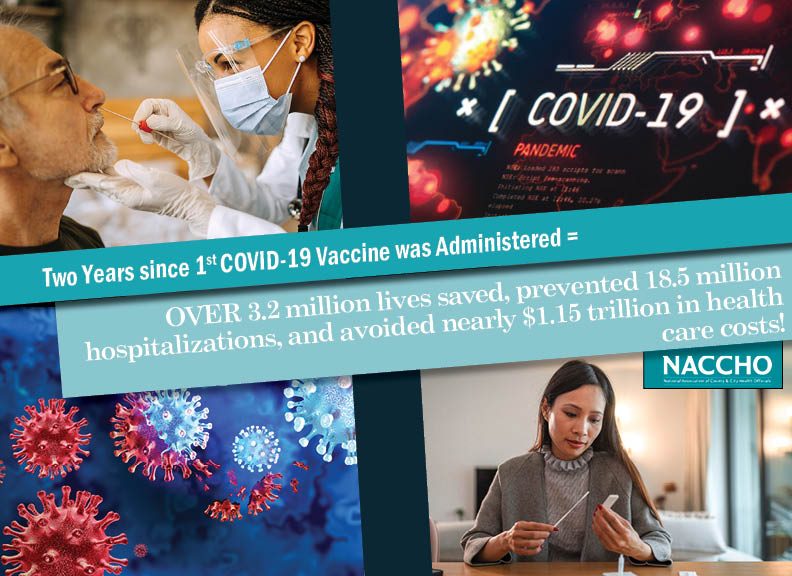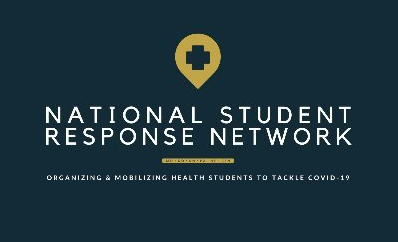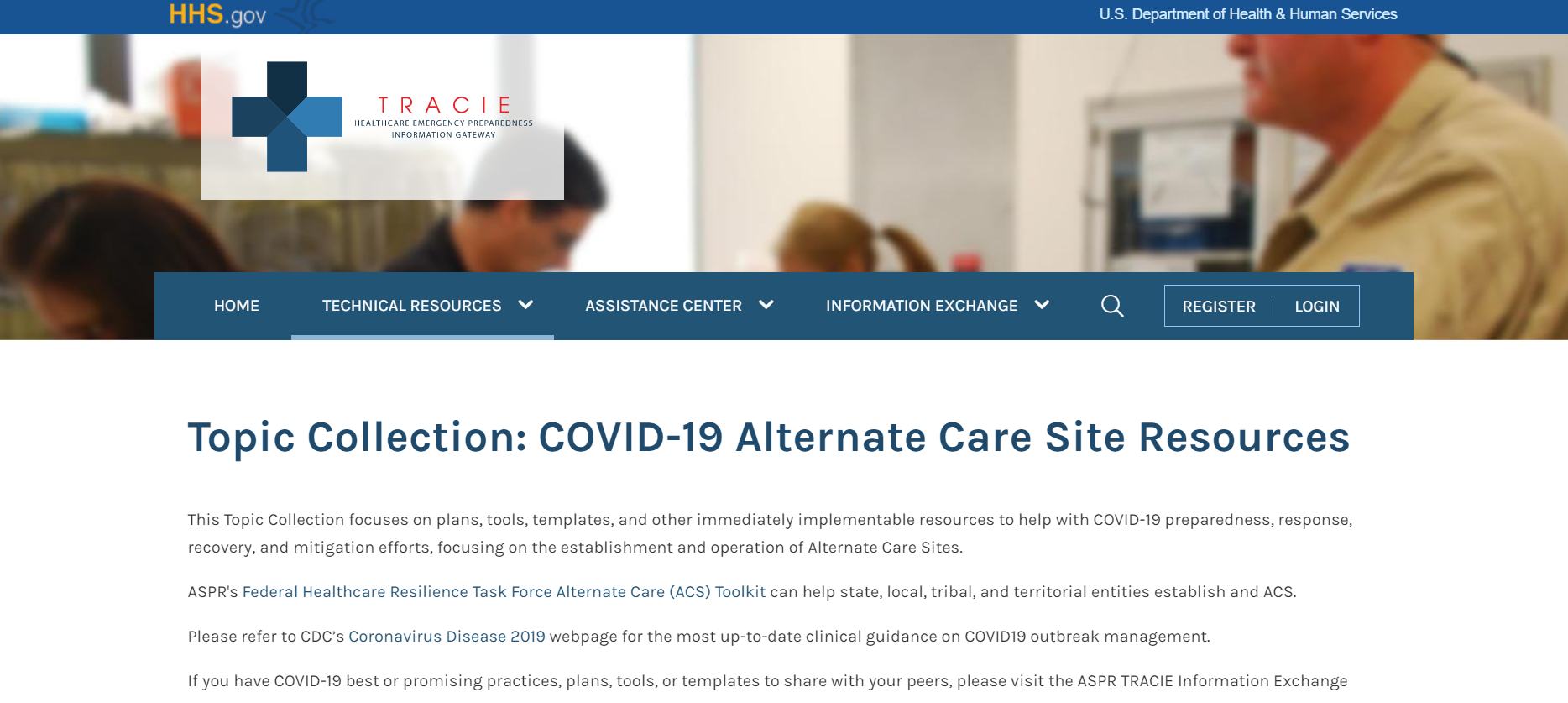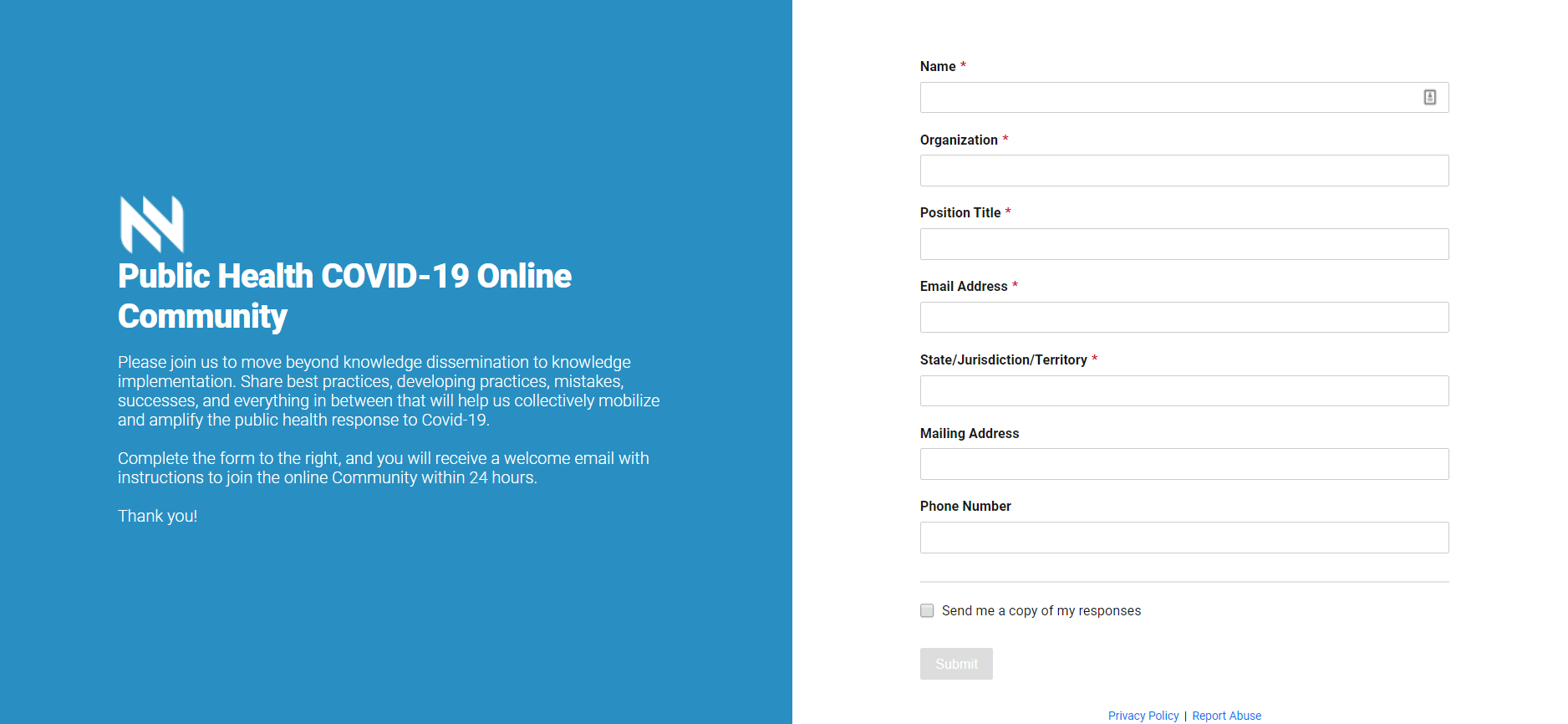Popular Categories
Free Online Trainings through the Emergency Responder Health Monitoring and...
The National Institute for Occupational Safety and Health (NIOSH) at CDC has introduced the U.S. National Response Team (NRT)...
Aug 01, 2014 | Admin
NACCHO Releases Resources to Help LHDs Address CDC Public Health Preparedness...
A listing of top-tier resources for local health departments (LHDs) is now available online to assist in addressing select CDC public...
Jul 31, 2014 | Rachel Schulman
Using Social Media for Enhanced Situational Awareness and Decision Support
The Federal Emergency Management Agency (FEMA) has released a report entitled, “Using Social Media for Enhanced Situational...
Jul 24, 2014 | Admin
CDC Launches Updated Online CERC Training
The Centers for Disease Control and Prevention (CDC) has updated its Web-based crisis and emergency risk communication (CERC) training...
Jul 22, 2014 | Admin
Understanding Mission Ready Packages for MRC Units
The Association of State and Territorial Health Officials has created a factsheet to highlight the role of MRC units in Mission Ready...
Jul 18, 2014 | Admin
Tackling the Legal Aspects of Public Health Emergency Preparedness
Imagine a new type of influenza or other communicable condition is spreading rapidly throughout your state or locality. Essential...
Jul 14, 2014 | Guest Author
“Crisis Standards of Care: Lessons from Communities Building Their Plans” Workshop...
The Institute of Medicine has released the workshop summary from the 2014 Preparedness Summit session, “Crisis Stands of Care:...
Jun 27, 2014 | Admin
New Emergency Preparedness Training Program Released for People with Access and...
It is well known that people with disabilities and other functional/access needs are less likely to be included in emergency...
Jun 23, 2014 | Guest Author
The Social Vulnerability Index
Every community must prepare for and respond to hazardous events, whether a natural disaster like a tornado or disease outbreak, or a...
Jun 11, 2014 | Admin
Free Online Trainings through the Emergency Responder Health Monitoring and Surveillance SystemThe National Institute for Occupational Safety and Health (NIOSH) at CDC has introduced the U.S. National Response Team (NRT) Emergency Responder Health Monitoring and Surveillance (ERHMS) system. The ERHMS system provides guidelines for protecting emergency responders involved in various types of emergencies and settings and can be used by anyone involved with the deployment and protection... Aug 01, 2014 | Admin |
NACCHO Releases Resources to Help LHDs Address CDC Public Health Preparedness CapabilitiesA listing of top-tier resources for local health departments (LHDs) is now available online to assist in addressing select CDC public health preparedness capabilities. As LHDs strive to achieve and enhance community preparedness and recovery capacity and capability, they often face an assortment of resources from a wide-ranging sources. With support from the CDC, NACCHO has developed […] Jul 31, 2014 | Rachel Schulman |
Using Social Media for Enhanced Situational Awareness and Decision SupportThe Federal Emergency Management Agency (FEMA) has released a report entitled, “Using Social Media for Enhanced Situational Awareness and Decision Support.” Historically, the emergency response community has leveraged multiple data sources, including land mobile radios, maps, computer-aided dispatch, crisis management systems, traffic cameras, geographic information systems, and... Jul 24, 2014 | Admin |
CDC Launches Updated Online CERC TrainingThe Centers for Disease Control and Prevention (CDC) has updated its Web-based crisis and emergency risk communication (CERC) training course, in which participants can learn about key CERC principles and how to apply them before, during, and after a public health emergency response. The updated training includes nine modules that are now available online. Designed […] Jul 22, 2014 | Admin |
Understanding Mission Ready Packages for MRC UnitsThe Association of State and Territorial Health Officials has created a factsheet to highlight the role of MRC units in Mission Ready Packages (MRPs), which are specially created asset bundles used in disaster recovery and response. MRPs are defined as “specific response and recovery capabilities that are organized, developed, trained and exercised prior to an emergency […] Jul 18, 2014 | Admin |
Tackling the Legal Aspects of Public Health Emergency PreparednessImagine a new type of influenza or other communicable condition is spreading rapidly throughout your state or locality. Essential resources are quickly being depleted. State and local health care personnel are strained by the number of cases and infections within their own ranks. What legal powers do you need to respond effectively and protect the public's health? Could you use volunteers from... Jul 14, 2014 | Guest Author |
“Crisis Standards of Care: Lessons from Communities Building Their Plans” Workshop Summary AvailableThe Institute of Medicine has released the workshop summary from the 2014 Preparedness Summit session, “Crisis Stands of Care: Lessons from Communities Building Their Plans.” This forum furthered the work on Crisis Standards of Care (CSC) and the fair and ethical allocation of scarce resources during a medical or public health emergency. This session shared lessons and […] Jun 27, 2014 | Admin |
New Emergency Preparedness Training Program Released for People with Access and Functional NeedsIt is well known that people with disabilities and other functional/access needs are less likely to be included in emergency preparedness planning efforts and are more likely than members of the general population to be left behind in emergencies and suffer negative health outcomes as a result. In order to address this disparity, The Connecticut Council […] Jun 23, 2014 | Guest Author |
The Social Vulnerability IndexEvery community must prepare for and respond to hazardous events, whether a natural disaster like a tornado or disease outbreak, or a human‐made event like a harmful chemical spill. A number of factors, including poverty, lack of access to transportation, and crowded housing may weaken a community’s ability to prevent human suffering and financial loss […] Jun 11, 2014 | Admin |
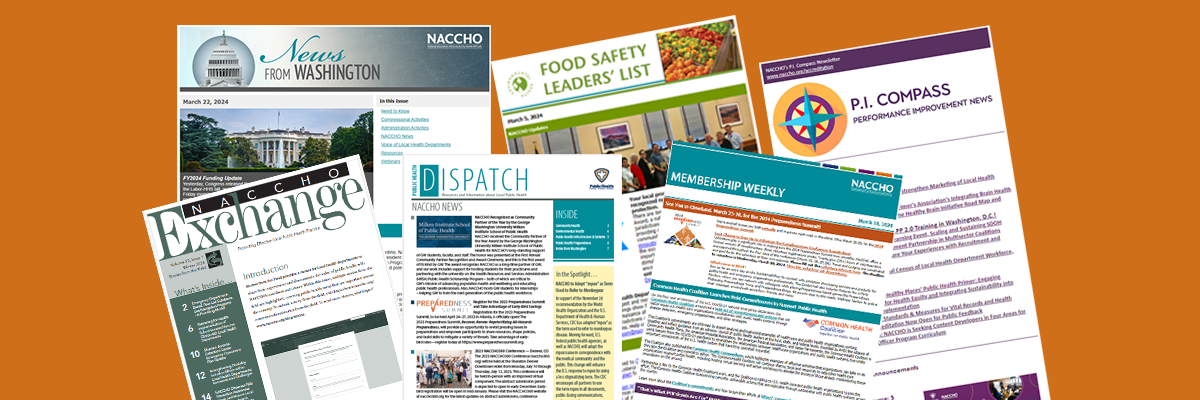
Subscribe Today
Sign Up for the E-mail Digests
Create an account or login to MyNACCHO and go to "My Subscriptions."
SUBSCRIBE NOW